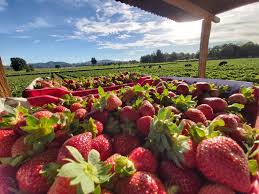 Share on Facebook
Share on Facebook
 Lettuce, broccoli, carrots, potatoes, apples and pears also contain microplastics. The "discovery", first in the world in the sector, comes from the University of Catania.
Lettuce, broccoli, carrots, potatoes, apples and pears also contain microplastics. The "discovery", first in the world in the sector, comes from the University of Catania.
This is revealed by a study that reports the concentrations of microplastics contained in some of the most consumed fruits and vegetables in Italy. The study, carried out in 2019, a few weeks ago was published in the article "Micro- and nano-plastics in edible fruit and vegetables. The first diet risks assessment for the general population" in the important scientific journal Environmental Research (Elsevier) (ranking higher than 5).
The research, conducted by the group of the Laboratory of Environmental and Food Hygiene of the University of Catania, have the signature of researchers Gea Oliveri Conti, Margherita Ferrante, Claudia Favara, Ilenia Nicolosi, Antonio Cristaldi, Maria Fiore and Pietro Zuccarello of the University of Catania together with Mohamed Banni of the Laboratoire de Biochimie et Toxicologie Environnementale of Sousse in Tunisia.
In the study of the Etnean Laboratory, directed by Prof. Margherita Ferrante, the data deriving from the application of the innovative patent in Catania - created by Ferrante, Oliveri Conti and Zuccarello - on vegetables (among fruit, apples and pears, while among vegetables, potatoes, carrots, lettuce and broccoli) are published, opening a scenario never before hypothesized. Thanks to the patented technology, in fact, it is possible to detect the presence of microplastics below 10 microns in vegetable tissues.
The data show a variable contamination with average microplastics size from 1.51 to 2.52 microns and an average quantitative range from 223,000 (52,600-307,750) to 97,800 (72,175-130,500) particles per gram of vegetable respectively in fruits and vegetables.
«The working group - Prof. Margherita Ferrante and the researcher Gea Oliveri Conti explain - is also expanding the food investigated. A further article on data deriving from fish fillets is currently being prepared. The article also reports the Estimated Daily Intakes (Estimated Daily Intakes) for adults and children, becoming in fact the first study that quantifies the exposure to microplastics below 10 microns of the general population through the ingestion of these foods».
The research shows that the impact of plastic waste from seas and watercourses on natural habitats and wildlife is an emerging global problem and EFSA (European Food Safety Autority), together with the European Commission, has already called for a first step towards a future assessment of the potential risks to consumers from the presence of microplastics and nanoplastics in food, particularly fish products.
This issue was the subject of a journalistic Inquiry carried out in 2019 by journalist Luca Ciliberti entitled "What we eat" with the participation of the Laboratory of Environmental and Food Hygiene of the University of Catania and also of a question on the presence of microplastics and their contamination in plants presented in Brussels by the member of European Parliament, Ignazio Corrao.
In April last year, the then Vice-President, Jyrki Katainen, on behalf of the Commission, answered the question that the presence of microplastics in vegetables, as demonstrated by the Etna study, was an entirely new element.
«In the presence of new scientific evidence on the possible health effects of micro and nanoplastics, their entry into the food chain and the resulting human and animal exposure through a normal diet, appropriate measures could be considered if there is evidence of a risk to human and animal health», Jyrki Katainen responded. The Commission is considering further actions to fund research on exposure to micro and nanoplastics and their health effects under the Horizon 2020 Framework Programme for Research and Innovation.
https://www.siciliannews.com/post/microplastics-in-fruit-and-vegetables-the-discovery-of-the-university-of-catania?fbclid=IwAR0hxzbLZax2XaLa9z9ub9SC2YUULQ6ojcAFTy4rfbYv7geQOFF4ELB8d6s


